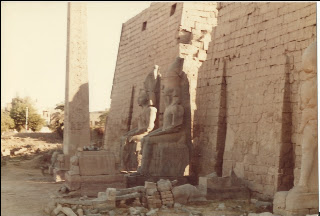I still have more photos to post from my recent vacation, but before I do I want to mention an exhibit in Berlin that is celebrating the 100th anniversary of the finding of the famous bust of Queen Nefertiti.
Numerous works dating to the Amarna Period are on display as well as Ludwig Brochardt's excavation diaries. And the exhibit is in a museum that already contains one of the best collections of ancient Egyptian art in the world.
If I had been aware of this exhibit sooner, I might have re-thought the vacation plans a bit.....
Here are some links with information on the exhibit:
http://www.smb.museum/smb/kalender/details.php?lang=en&objID=29934
http://www.foxnews.com/scitech/slideshow/2012/08/28/museum-marks-100-years-since-finding-queen-nefertiti/#slide=5
http://www.imlichtvonamarna.de
And here is a link that is not specifically about this exhibit, but it is worth checking out:
http://www.egyptian-museum-berlin.com/c52.php
Mohammed Ismail
4 years ago





